The Mystery Behind Vikings: Groundbreaking DNA Sequencing Study Shows They Weren’t Who We Thought They Were
We have all grown up watching several interpretations of Vikings in various forms of media, but there is one common thread that binds them – their ferocity. People saw them as bloodthirsty warriors whose main occupation was to pillage and plunder.
They were mainly heavy-set, fair-skinned, and blue-eyed, with long blonde tresses billowing in the air. Our ears still ring with their battle cries and metals clanging for their fights ahead; they were intense, and we’ve pictured them that way for ages. Turns out, we were all wrong. In 2020, a DNA sequencing study debunked some of those theories.
Who Were the Vikings?
In history books, Vikings have always painted a terrifying picture. They were burly men from the Scandinavian Islands whose favorite pastime was to raid for survival. Their battle instincts rivaled none, and they were once some of Earth’s most feared warriors.

Source: Visit Denmark
With axes, swords, lances, and spears, always at the ready, these men were known to watch out for their own and never intermingle with other communities and cultures. At least, that’s what we have been led to believe.
Meaning of the Word "Viking"
The academic world defines Vikings as people of Scandinavian descent who had plundered and raided their way through Europe between the eighth and the 11th century. Interestingly, the term “Viking” comes from the Old Norse word “Vikingr,” which means pirate.

Source: MN Field Trip Library
“Vikingr” went on expeditions by the sea in a group with other Vikingar, the plural term for Vikings. There is evidence of the usage of those terms by the Scandanavians during the Viking Age, roughly 793 to 1066 CE, from the runic inscriptions and the praise poetry known as skaldic verse they left behind.
Ferocious Sea Raiders of Scandinavia
It was long believed that during the Middle Ages, the fearsome Norsemen were Scandinavian traders and seafaring pirates who had settled in North Western Europe for over three centuries. These ferocious sea raiders often undertook large-scale voyages, indulging in conquest, trading, and colonizing through Europe until they reached North America.
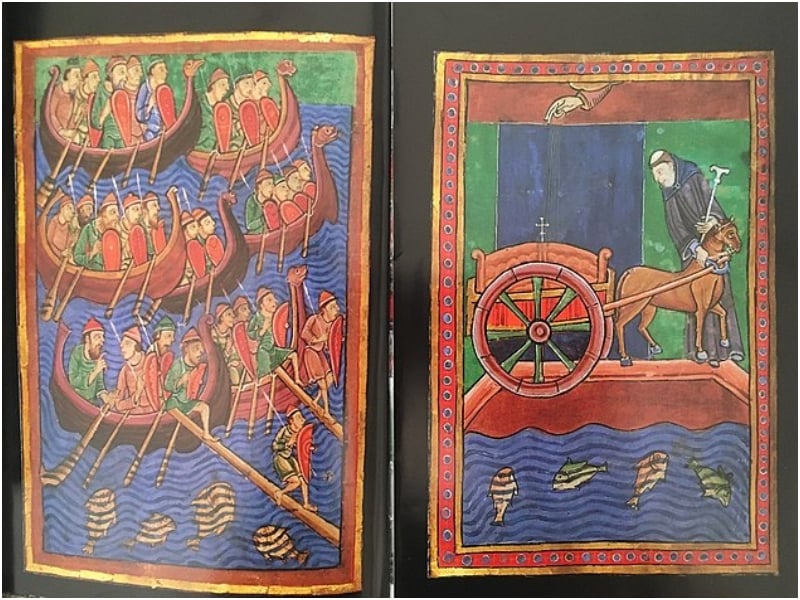
Source: Uriel1022/Wikimedia Commons
While DNA studies have put many of these theories to rest, it has firmly confirmed that the Vikings did exist. Even though their raids were terrorizing, there are more layers to them than we have seen so far.
Get Ready for the New Picture
The knowledge we have gained about Vikings comes from centuries-old giant runestones on which they themselves had carved out the innumerable stories of their lives. It’s written using the runic alphabet, the most commonly used writing system by the people from Northern Europe, Scandinavia, and Britain once upon a time.

Source: Silar/Wikimedia Commons
With more revelations coming to light from a 2020 study, we must brace ourselves for the new picture that’s slowly emerging.
Pioneering Research Studies
Let’s not mince words here. A new genetic study has flipped the illusion of Vikings on its head, and we are less than prepared to accept the new spins on the mighty Norsemen. It’s a groundbreaking research study that has halted our previous theories about the Vikings.
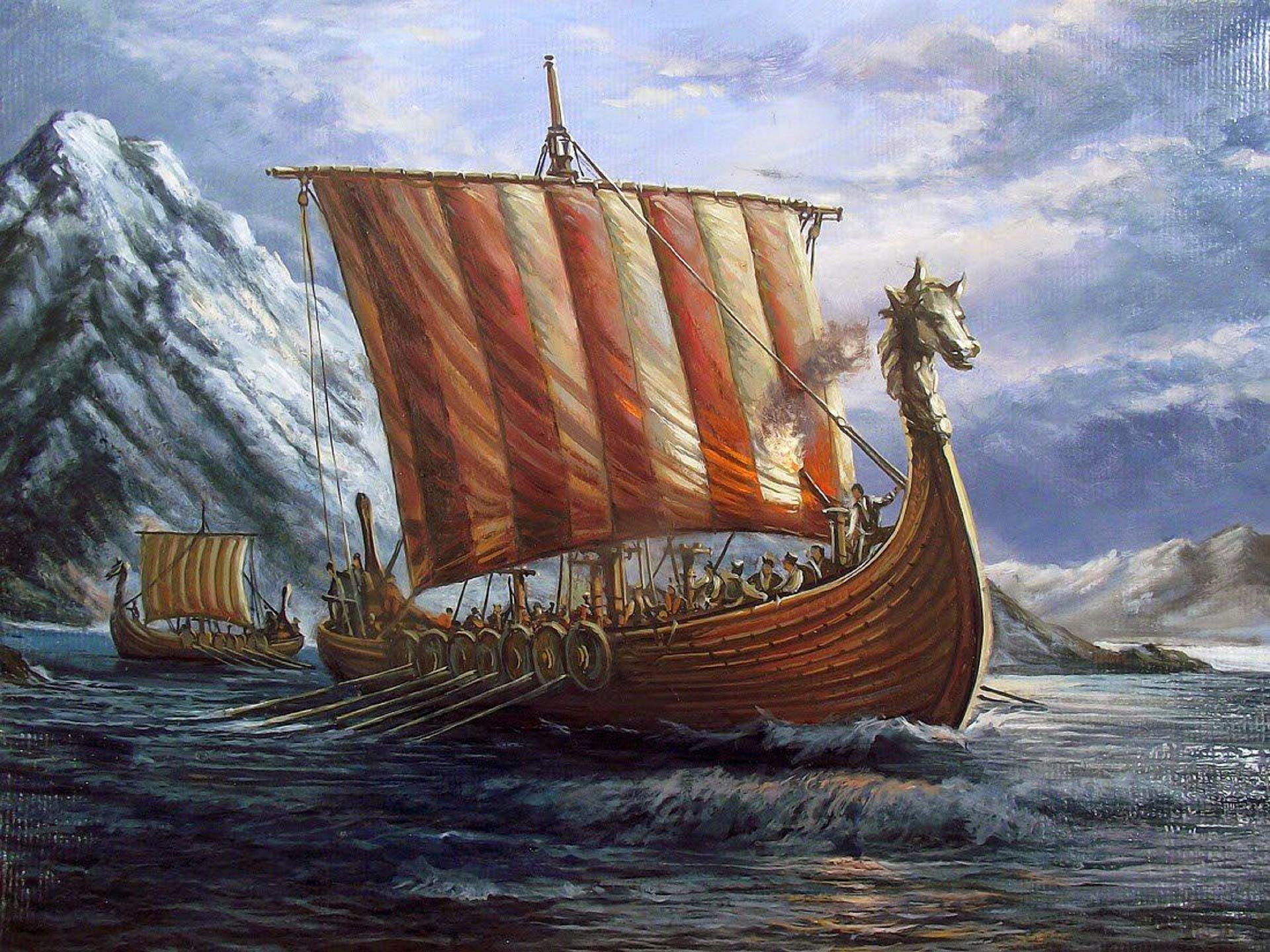
Source: Sci.News
Simply put, the authenticity of the DNA sequencing and its results changes the perception of Vikings in a significant way. So, what about them is so different from how we have perceived them so far?
A Six-Year Research Project
The in-depth six-year research project was successfully led by Professor Eske Willerslev, the director of the University of Copenhagen’s Lundbeck Foundation GeoGenetics Centre. Its results, published in the Nature journal, effectively debunk our modern take on the age-old Vikings and their traditions.

Source: JC Merriman/Wikimedia Commons
We have long held this notion that Vikings are primarily out on raiding parties with their large fleet, generally traipsing through Europe picking up fights with the Kings. However, the study proves that it wasn’t quite that kind of world for the Vikings.
DNA Sequencing of Viking Skeletons
International scientists from Denmark and England traveled from the Scottish Orkney Islands to Estonia, extracting 442 Viking skeletons from various cemeteries. They had to cover all the regions that had the Viking remains scattered across Europe.
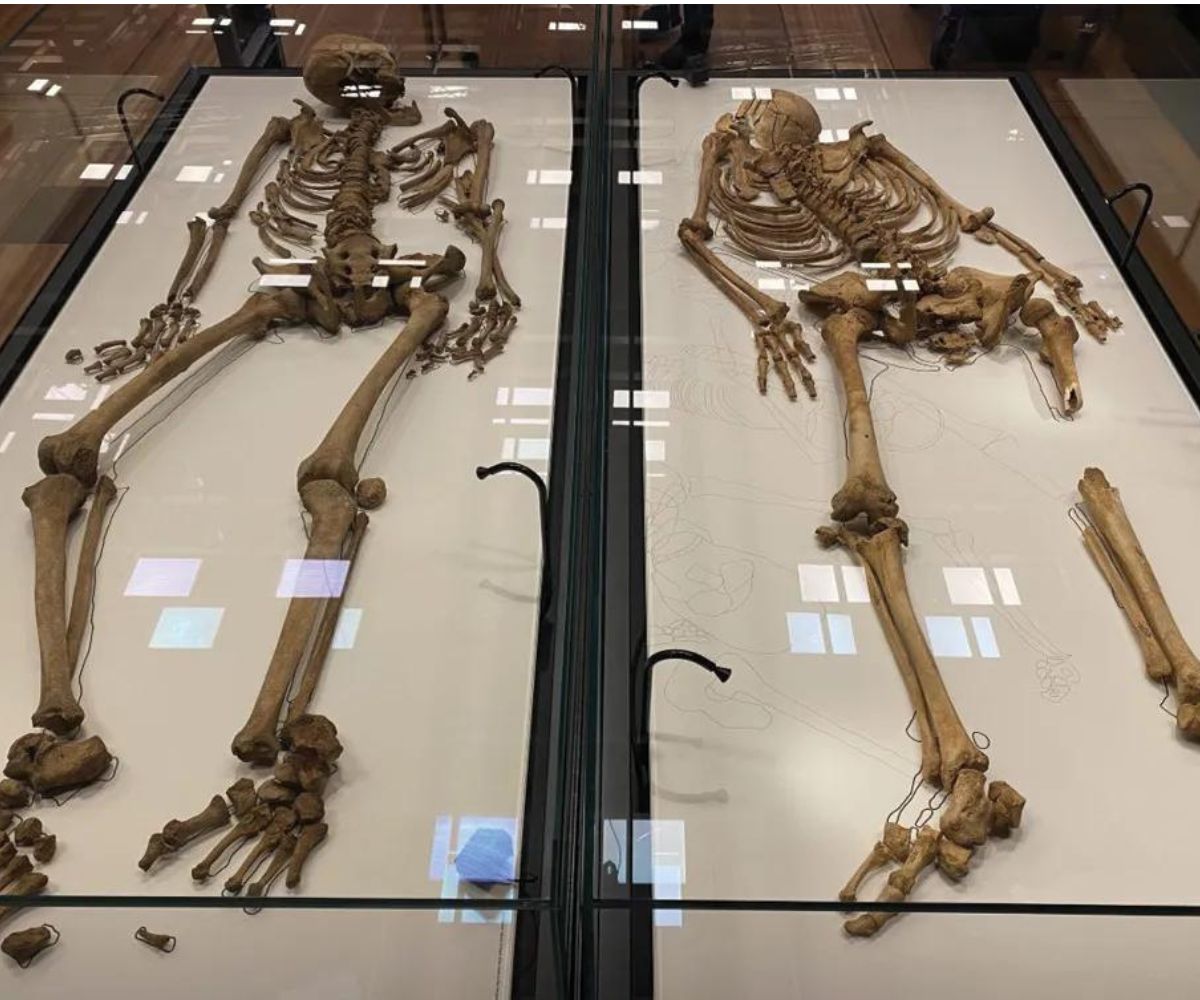
Source: The Past
From their bones and teeth that were taken for genetic sequencing, the scientists could make out that they were mostly men, women, kids, and babies. The team analyzing the DNA soon realized that the remains dug up in Estonia were from boat burials, which used to be the farewell norm in the Viking Age.
Using the Latest Technology for Analysis
The team of international scientists led by Professor Willerslev used the latest cutting-edge analytical tools to research and study the DNA sequencing of the Viking skeletons. It’s the world’s largest-ever operation in this field, and the results have changed how Vikings have been viewed for centuries.

Source: Wikipedia
All the tested remains from the archaeological sites across Greenland and England have revealed that the Vikings did not have homogenous roots. The skeletons extracted from famous Viking burial grounds in Scotland have further confirmed that they belong to local people who had taken on Viking identities and were buried as one.
Originated in Scandinavia
We have long known that the Vikings originated from Scandinavia, largely settled inland and also near the coast. They were primarily fishermen and farmers who later developed a ferocious image that has stuck with them for centuries. So, where did they get such a fierce reputation from?

Source: TripSavvy
Let’s return to their primary skills as fishermen and seafarers to get to the truth. Initially, they were satisfied with that identity but soon, circumstances changed, and they had to become more to survive.
Innovative and Self-Reliant
Historical records suggest that the Vikings were intelligent and incredibly innovative people. Their methods of maximizing the resources at hand show how creatively gifted they were. As seamen, they needed their boats to sail faster. So, instead of relying on manpower alone, the self-reliant Vikings harnessed the power of the winds to set sail.

Source: Viking Style
Soon, they had fast-moving vessels under their command for their voyages and expeditions. Their coastal raids steadily increased with the sea crossings becoming quicker. With everything going so well, why did they turn to pillage for survival?
A Popular Theory
One of the most predominant theories is that the Vikings ran out of fertile land and, therefore, had to come up with extreme measures for survival.

Source: Julian Paren/Wikimedia Commons
With insufficient food to go around as their villages became overpopulated, the Vikings had to rely primarily on their quick wits, skills, and weapons to make do. The scarcity of cultivable agricultural land had the tribe on tenterhooks. The burly men began to look for alternate means to make a living.
Seeking Greener Pastures
Another famous theory is that the traders influenced the Vikings to go overseas to search for treasures. They constantly fed the seafarers with tales of wealth they could go after, and eventually, the Vikings couldn’t resist the temptation to set sail for greener pastures.
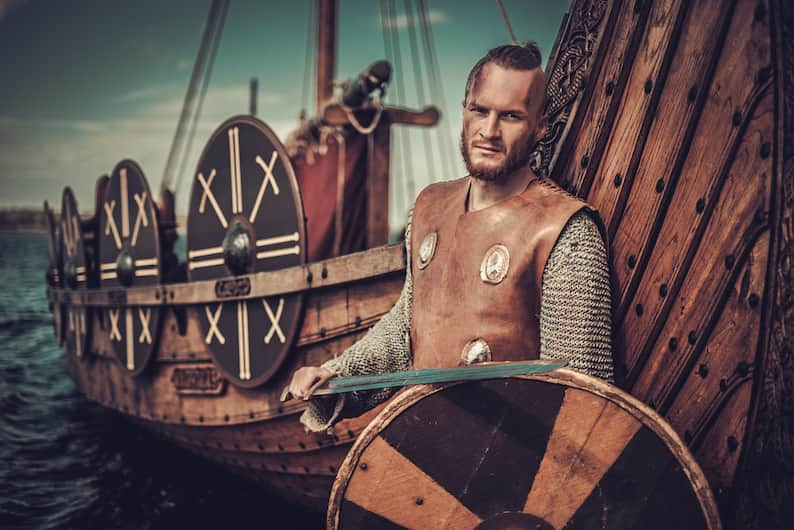
Source: Seek Scandinavia
Most of their exploits at sea were at the behest of the warring chieftains in their struggle to gain more power and wealth. No matter their reason, everyone dreaded becoming the target of their terrifying exploits.
Vikings' Greatest Honor
We may know the bare minimum about the Vikings, and some information has been questioned, mainly on their authenticity thanks to the DNA sequencing study, but one thing is sure. They had unshakeable faith in the Norse Gods and strongly believed in laying down their lives in the battles.

Source: Lorenz Frølich/Wikimedia Commons
It was a tremendous honor for the Vikings to sacrifice their lives on the battleground. In doing so, the warriors wished to enter Valhalla and lead their afterlife with Odin in that sacred place. As the study has shown, there’s more.
Unearthing the Viking Remains
The remains of 442 exhumed Viking bodies and their genetic testing has unearthed many facts we could not know until the detailed DNA study. Genetic material was assimilated from these ancient samples, and analyzed compared to the data collected from 1,118 ancient individuals and 3,855 current residents of various countries, such as Sweden, Denmark, and the United Kingdom.

Source: Wikimedia Commons
It showed more genetic intermixing than initially imagined, which proved that the Vikings did not have a homogenous background and instead had mixed ancestry.
New Discoveries Made at the Burial Sites
That was not all; the bodies from the burial sites made way for more astonishing discoveries. The gravesite in the Scottish Orkney Islands had all the markings of a Viking burial, replete with ceremonial swords and such. This place had two bodies, and neither of them was Viking.

Source: Wikimedia Commons
In fact, their DNA sequencing revealed that one was from Scotland and the other from Ireland. The fact that these men weren’t Scandinavians startled the scientists, but it opened up a plethora of infinite possibilities that were far more exciting than the theories we have assumed so far.
No Intermingling, As Previously Believed
Further analysis of the DNA collected from the burial sites found another fascinating finding. The Vikings society was divided into three distinct groups according to their genetics – Vikings from Denmark were the ones to raid the English, those from Sweden traveled across to the Baltic Sea, and the third section of Norsemen who settled in Ireland, Iceland, and Greenland were originally from Norway.

Source: Age of Empires Forum
Even more interesting is that none of these groups ever intermingled, which was different from what we have been led to believe for all these centuries.
Unbelievable Revelations
During the DNA study of the Viking remains, Professor Willerslev was especially thrilled to note that the Vikings weren’t just Scandinavians. In fact, their genetic ancestry has been traced back to Asian and Southern European influences, which is quite a surprising find.
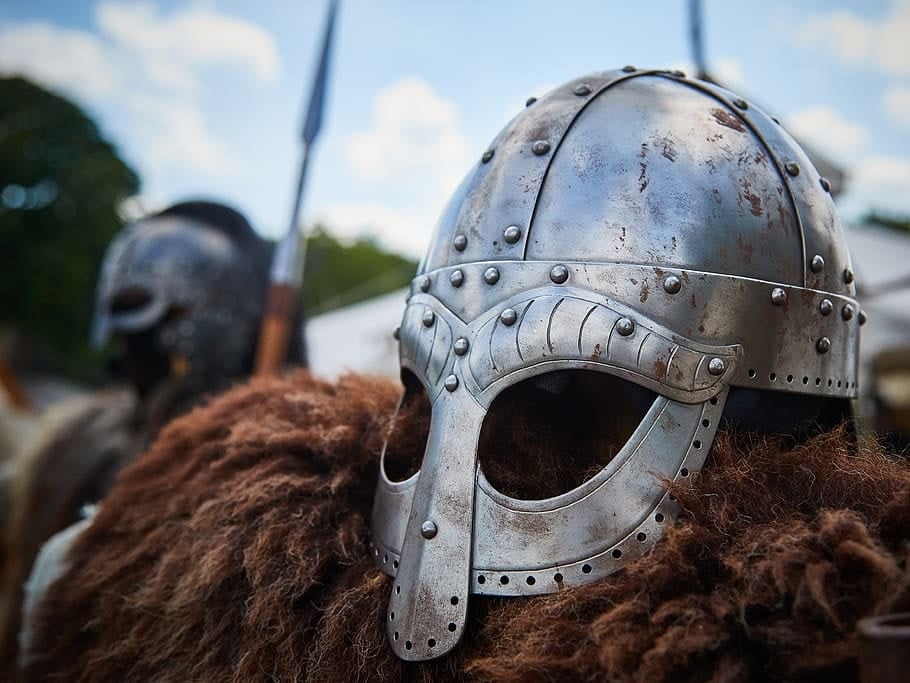
Source: Nation.Cymru
This basically begs the question we thought everyone knew the answer to – who were the Vikings? The research clearly shows that their broader identity was not restricted to people with Scandinavian ancestry alone. It also suggests an ongoing gene flow across Europe, with many Vikings having non-Scandinavian genetic roots.
Vikings' Representation in Media
Professor Willerslev was shocked to find so many previous theories thoroughly debunked with the new findings. The Vikings so far have been largely represented on television and in books as a brood of burly men who were more brawn than brains and did nothing better than to go on long pillaging expeditions.

Source: Uriel1022/Wikimedia Commons
While some earlier assumptions with little evidence have now been confirmed, others have mostly been disproved thanks to this extensive study. Now when we look at Thor, we’ll see more than his good looks and immense strength.
Brunette, Not Blonde
Did we mention Vikings were blue-eyed and blonde? Let’s erase that description from our hearts and minds forever. The new study put that visually stunning imagery to rest and instead revealed that they were, in fact, primarily brunettes. Since their genetics had Asian and Southern European roots, their hair was mostly dark.

Source: DW
Mainstream media will need help changing how Vikings have been physically represented on screen. With so much diverse and opposing information on Vikings, it is time to update those history books so we can see them represented more accurately.
More Than Raiders and Looters
Their social strata were divided into three major classes – Jarls, the highest echelons of their society similar to Earls, who were quite wealthy; Karls consisted of the everyday farmers, sailors, craftsmen, and warriors, while the lowest echelon, the Thralls, were forced into slavery. More than their social divisions, they gained notoriety primarily as hardened warriors.

Source: About History
The recent DNA study put a new twist to this tale. One of the most shocking revelations to overturn almost everything we know about Vikings is that they were more than raiders and looters, pillaging across Europe for treasures.
Participated in Cultural Exchange
There is evidence to support the theory that these men were an integral part of cultural exchanges between different groups across borders. They participated in trading activities, exporting values, beliefs, and traditional practices. The Vikings also strived to contribute to the political structures of that era, and as travelers, they spread their language and cultures far and wide.

Source: Varvara Kless-Kaminskaia/Wikimedia Commons
This gives more credence to their intercultural genetic ancestry. Quite notably, the bodies found at some popular Viking burial sites weren’t even Vikings.
Expanding Viking Identity
While the study proves that there’s more genetic diversity to Viking identity, it also shows that the foreign gene flow into the Scandinavians from the Asian regions of the world started well before the Viking Age. For one, this new evidence has crumbled their entire identity as terrifying warriors.

Source: Islandshest/Wikimedia Commons
They are now found to have been more social than we first thought. Even the Irish and the Scottish integrated well into Viking society. In fact, those of non-Scandinavian descent have mingled well enough to warrant ceremonial Viking burials.
Transformational Period of History
This new knowledge of Vikings and their lives has greatly enriched our knowledge of the Viking Age and their many interactions with other nations. It was a transformational period in history that we have now gained more information on.

Source: Varvara Kless-Kaminskaia/Wikimedia Commons
This new insight gained from genetic sequencing will help historians better understand the dominant traits of the Vikings and the course of actions that influenced history during their time. Scientists will also now have better grasp of Vikings’ metabolism and immunity.
The Truth About Vikings
The DNA sequencing study of the Vikings’ skeletons has laid bare the truth about their ancestry in a way that completely changes how we have perceived them until now. Most of us have seen them through the lenses of the creatives who have presented them on-screen through television serials and historical films. The study has altered those images in one big swoop.

Source: Legoland Billund Resort/Wikimedia Commons
We now know the Vikings were not the merciless pillagers they were made out to be. They were social beings who were culturally rich, skilled, innovative, and self-reliant. The world needs to see them for who they truly were.
